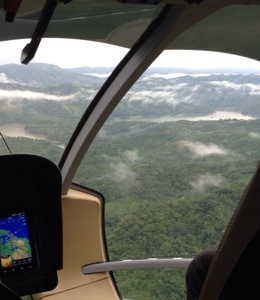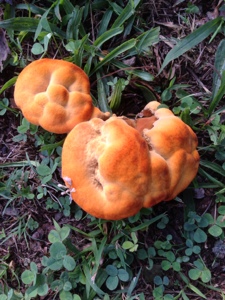
by Loti | Apr 21, 2015 | Amazon, Animals, Birds, Flowers, Landscapes, Plants, Reptiles
Amazon, Peru. How to describe it? A big muddy river or the most beautiful spot on our planet. Where else can you see pink dolphins (the only place in the world), monkeys, 2 toed sloths, wild orchids, 4 foot iguanas and gorgeous sunsets while navigating a giant, muddy river? The statistics are staggering; 25% of all our oxygen is produced in the Amazon, one third of all species live there, the drainage basin covers 2.7 million square miles, and 25% of all drugs come from rain forest ingredients. Wow. Yet, we have destroyed 20% of the forest already; gone forever to make way for cattle grazing, mining, logging and agriculture. And the deforestation is continuing at a dizzying pace. What can be done before the whole ecosystem collapses? Well, you can visit (ecotourism supports the rainforest), think about your food choices (huge swathes of rainforest are being destroyed to plant soybeans in support of cattle), avoid companies exploiting the forest (selling exotic animals or timber) and learn all you can. But time to get off my soapbox and back to planning a return trip to Peru in search of birds and orchids! Now that is helpful and...

by Loti | Jan 20, 2014 | Animals, Australia, Birds, Endangered Species, Environment, Flowers, Food, Health, Insects, Plants
Adelaide, Australia. Within walking distance of our hotel, I discover a magical botanical garden. Free to the public, in the middle of downtown, this 125 acre oasis includes a rainforest under glass. The forest is housed in the largest single span greenhouse in the Southern Hemisphere (for those of us geography challenged, the Southern Hemisphere is all the land below the equator including Anartica, Australia, most of South America and a third of Africa.) Entering the glass 2 story structure, the air is misty and buzzing with activity, from birds, insects, plants growing and 1,000 misting nozzles. I have always heard how important the rainforest (defined as a dense forest receiving 90-180 inches of annual rainfall) is to our global ecosystem, but I had no idea 50% of the world’s plants and animals live in them. And many of our medicines (some anti cancer and leukemia drugs for starters) come from rainforest plants. Yet we are losing 1-2 (and some biologists estimate the number is closer to 100) animal and plant species a day to extinction primarily from deforestation. Wow! So what can we do? I plan on learning more about the issues and possible solutions by joining a conservation club, visiting rain forests whenever I can and taking steps to recycle and be nice to our Earth. Once a species is gone, we can never get it back. And that sounds so...

by Loti | Oct 12, 2013 | Conquering Fear, Environment, Panama, Plants, Uncategorized
Panama. It is hard for me to comprehend 52 million gallons of water. But it is the amount of water required to move one ship (just one) through the lock system of the Panama Canal. With approximately 40 ships going thru each day, 365 days a year, just do the math. A staggering quantity considering the water is not recycled and ends up in the ocean. So where does it all come from? Is it fresh water or salt? How is it replenished? A lot of questions tumbling thru my brain as we pull into the lock behind a large container ship and the water starts pouring in behind massive gates. And a little unnerving. The water, it turns out, comes from 1.5 million hectares of protected rainforest which surrounds the canal. The day after our partial canal transit by boat, I find myself in one of four cool helicopters (reminding me of the TV show MASH) flying over the rainforest in formation. The water collects in the Gaton Lake (partially seen in the photo) and is released into the ocean (all 52 million gallons) each time a transit is made. Without the forest, there would be no canal. Without the canal, there might be no rainforest since deforestation is occurring at a rapid pace. For me, it is an amazing feat of nature and man working together to provide an efficient trade route between the Caribbean/Atlantic and the Pacific...

by Loti | Aug 31, 2013 | Food, Health, Plants, Uncategorized, United States
North Carolina. Spotting these cool orange mushrooms on a recent walk in Tryon, NC, I wonder are they are edible? What is their name and do people actually eat mushrooms they find in the wild? With over 14,000 species of mushroom, I may never figure out what these mushrooms are called (an hour searching on the Internet produced no similar pictures). But I do learn over 3,000 species can be eaten with some being very nutritious. However, if you plan on foraging (hunting) mushrooms, you better know what you are doing as over 1,400 mushroom varieties are poisonous. Some deadly. Wow. I had no idea there were that many kinds. And apparently there are numerous mushroom clubs throughout the world and US where people learn about mushrooms, go foraging to collect mushrooms and then gather to cook meals from their forays. A mushroom club? How interesting. So next time you go for a walk, pay attention to the ground. Just since I spotted these mushrooms, I have seen 3 different species. A fascinating wild plant found in urban and rural settings, I look forward to learning more about them. And who knows, I just might send off for a kit to grow some at home and join a local club. Now that is...





